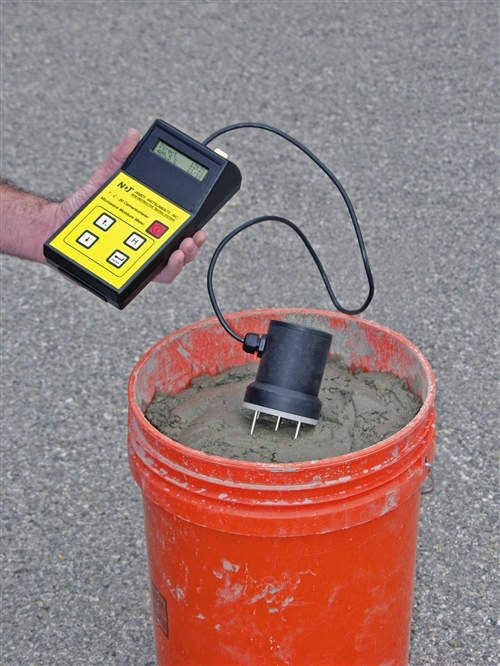Moisture Meter Reviews: Comparing the Best Versions for Professional and Do It Yourself Use
Moisture Meter Reviews: Comparing the Best Versions for Professional and Do It Yourself Use
Blog Article
Explore the Globe of Moisture Meters: Every Little Thing You Required to Know
In the world of moisture meters exists a globe of accuracy and functionality that usually goes undetected. Recognizing exactly how moisture meters operate, the various types available, and their varied uses can shed light on their value in making certain top quality and efficiency.
Exactly How Moisture Meters Work
Moisture meters run by measuring the electric conductivity or capacitance of materials to figure out the wetness web content existing. These meters are very useful tools across different industries, consisting of building, farming, and woodworking. By using different methods such as pinless or pin-type technology, dampness meters provide exact analyses that aid specialists make notified choices.
Pin-type dampness meters work by inserting the sharp pins right into the material being tested. On the other hand, pinless dampness meters utilize electromagnetic signals to scan a larger location without triggering any type of damage to the product's surface area.
Despite the approach used, wetness meters play an essential role in avoiding concerns such as mold and mildew development, structural damage, or item flaws brought on by excess dampness. Recognizing just how these meters job is crucial for ensuring the high quality and stability of materials in various applications.
Kinds Of Moisture Meters
Provided the critical duty wetness meters play in various sectors, it is vital to understand the various kinds offered to professionals for precisely examining dampness levels - Moisture Meter. There are primarily 2 primary kinds of wetness meters: pinless and pin-type dampness meters

On the various other hand, pinless moisture meters make use of electromagnetic sensor plates to check a bigger area of the product without causing any kind of damages. This type is appropriate for quickly scanning huge locations and is frequently used for floor covering, walls, and ceilings. Pinless meters are hassle-free for taking analyses on finished surface areas without leaving any kind of noticeable marks.
Both kinds of dampness meters have their advantages and are chosen based on the certain requirements of the job handy. Recognizing the distinctions in between these types is critical for professionals to make exact moisture assessments.
Applications Throughout Industries
Construction specialists rely on wetness meters to examine the moisture levels in building materials like drywall, wood, and concrete, which is essential for maintaining structural integrity and avoiding concerns like rot or mold. The floor covering industry utilizes wetness meters to measure the moisture material in subfloors prior to mounting numerous flooring coverings, stopping expensive damages due to excess wetness. In the food sector, moisture meters are utilized to check and manage moisture you can try here levels in products such as grains, nuts, and dried out fruits to keep quality and high quality.
Tips for Utilizing Wetness Meters
Utilize the wetness meter's calibration setups to ensure precise analyses when measuring the moisture web content in different products. Calibration is vital for the appropriate performance of a wetness meter. Before each use, it is recommended to check and adjust the calibration settings according to the particular material being evaluated. In addition, ensure the meter is readied to the proper wetness variety for the material you are determining to obtain the most exact outcomes.
When using a pin-type wetness meter, place the pins to the proper deepness advised for the product being evaluated. This guarantees that the moisture readings are taken from the proper depth within the product, offering an extra exact representation of its dampness content. For pinless moisture meters, remember to preserve correct contact with the Visit This Link product's surface area to obtain trustworthy readings.
Regularly examine and change the batteries in your moisture meter to avoid unreliable analyses due to low power. When not in usage to extend its life-span and preserve its precision, Shop the meter in a dry and safe location. By adhering to these ideas, you can take full advantage of the performance of your wetness meter and acquire specific moisture material measurements throughout various materials.
Maintenance and Calibration
To make certain the accuracy of dampness web content measurements, regular maintenance and calibration of the wetness meter are necessary steps in its appropriate performance. Calibration readjusts the wetness meter to guarantee that it supplies constant and trustworthy results.
Calibration needs to be performed periodically, specifically if the dampness meter is made use of regularly or in vital applications where accurate measurements are called for. By preserving and calibrating the moisture meter regularly, users can rely on the accuracy of the wetness content measurements obtained.
Verdict

Finally, wetness meters play an important role in numerous sectors by accurately measuring the wetness content of materials. Recognizing how more these devices function, the various kinds offered, and correct upkeep and calibration are crucial for obtaining dependable results. Whether in production, farming, or building, the usage of wetness meters helps make certain quality assurance and efficiency in processes.

In verdict, wetness meters play an important duty in different markets by accurately measuring the moisture material of materials.
Report this page